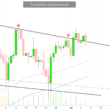According to data released by Adobe on Thursday, U.S. online shoppers set a new record by spending a whopping $12.7 billion during Amazon’s two-day Prime Day discount event this week. The surge in sales was driven by a rush to secure discounted items such as electronics, appliances, clothing, and toys.
Changing Shopping Habits
However, in a sign of changing consumer behavior, more customers opted to use “buy-now-pay-later” options for their purchases. This trend can be attributed to stubborn inflation and consumers becoming more cautious about spending on non-essential items. Amazon’s Prime Day took place on Tuesday and Wednesday this year.
Competition from Other Retailers
Despite the overwhelming success, Amazon is facing intensified competition from other large retailers. Walmart Inc., Target Corp., and Best Buy Co. also organized major discount events that ran concurrently this week.
Record-Breaking Results
The $12.7 billion sales figure represents a significant 6.1% increase from last year, according to Adobe. Shoppers spent $6.3 billion on Wednesday and $6.4 billion on Tuesday. The discounts offered on electronics reached as high as 14%, while those on clothing and toys peaked at 12% each. Demand for these goods has diminished in the past year as consumers focused more on essential purchases.
Rise of “Buy-Now-Pay-Later”
During the Prime Day event, 6.5% of customers opted for the “buy-now-pay-later” option, accounting for $927 million in revenue. This represents a remarkable 20% surge compared to last year, as shoppers sought greater flexibility when purchasing items such as furniture and electronics, as reported by Adobe.
Embracing Flexible Spending: Prime Day Sales Surge Amidst Uncertain Times
The persistent inflation and uncertain economic environment have caused consumers to take more adaptable approaches towards managing their spending during the Prime Day event, according to Vivek Pandya, a lead analyst at Adobe Digital Insights. This shift towards flexibility was reflected in the soaring revenue growth attributed to the buy-now-pay-later option. Pandya predicts that this trend will continue in the approaching months, particularly as the holiday shopping season draws closer.
Notably, on Wednesday, Adobe reported a significant increase in sales of appliances, with a 52% surge compared to the average daily sales in June. Housekeeping supplies also experienced a rise of 27% during the same period, while stationery and office supplies saw an impressive climb of 76%. These statistics suggest that customers are proactively preparing for back-to-school shopping.
Placer.ai, a customer-traffic analytics firm, recently indicated that current trends observed at retail locations may indicate that customers are growing weary of constrained online shopping habits and are gearing up to return to physical stores in July, taking advantage of the summer-season discounts.
Although Amazon faced setbacks due to its investment in Rivian Automotive Inc., resulting in financial losses last year, it is projected to recover this year. However, analysts from Jefferies warned that the resumption of student-loan payments could impact consumer spending, potentially affecting Amazon, Walmart, and Target the most.
As a result of these developments, Amazon’s shares increased by 2.1% on Thursday, while Walmart experienced a minor decline of 0.4%. Target, on the other hand, saw a slight upswing of 0.4%. Stay tuned for more insights on this rapidly evolving market.




